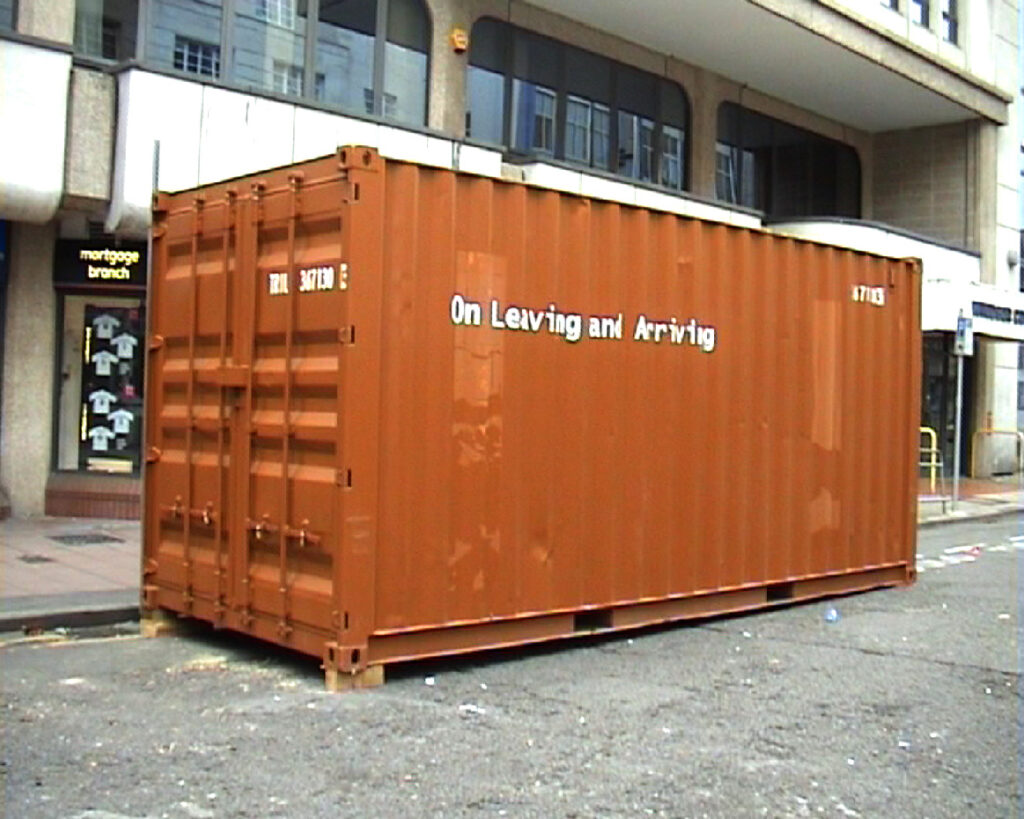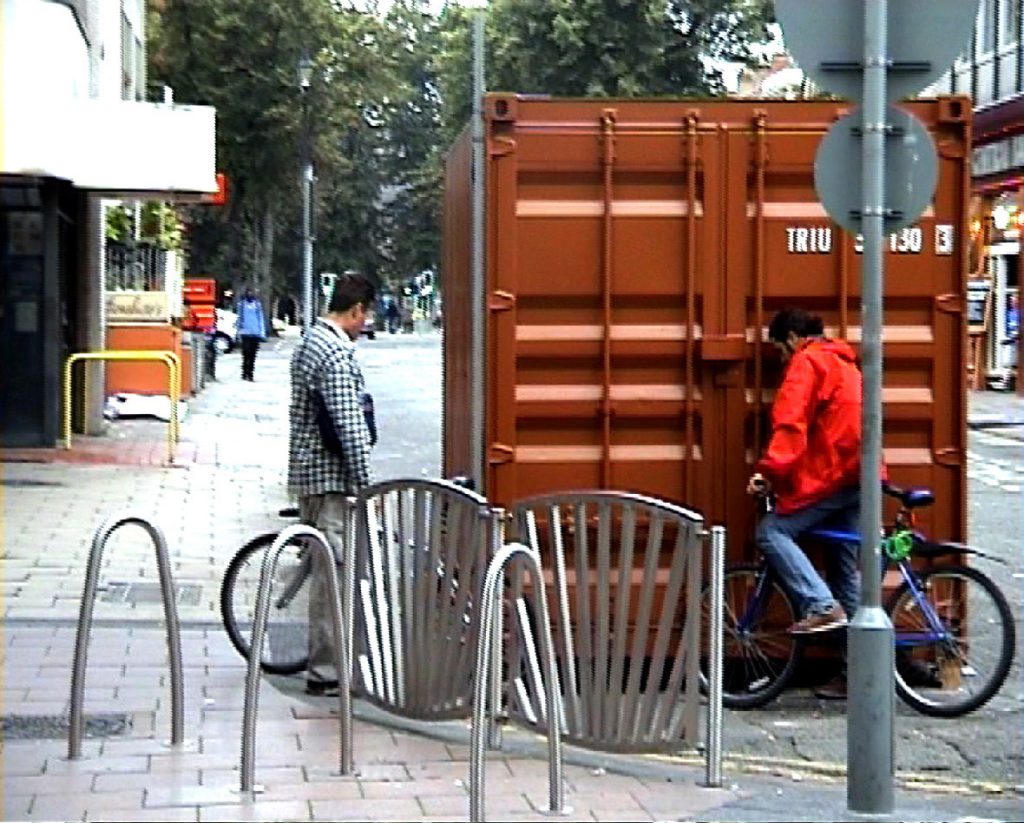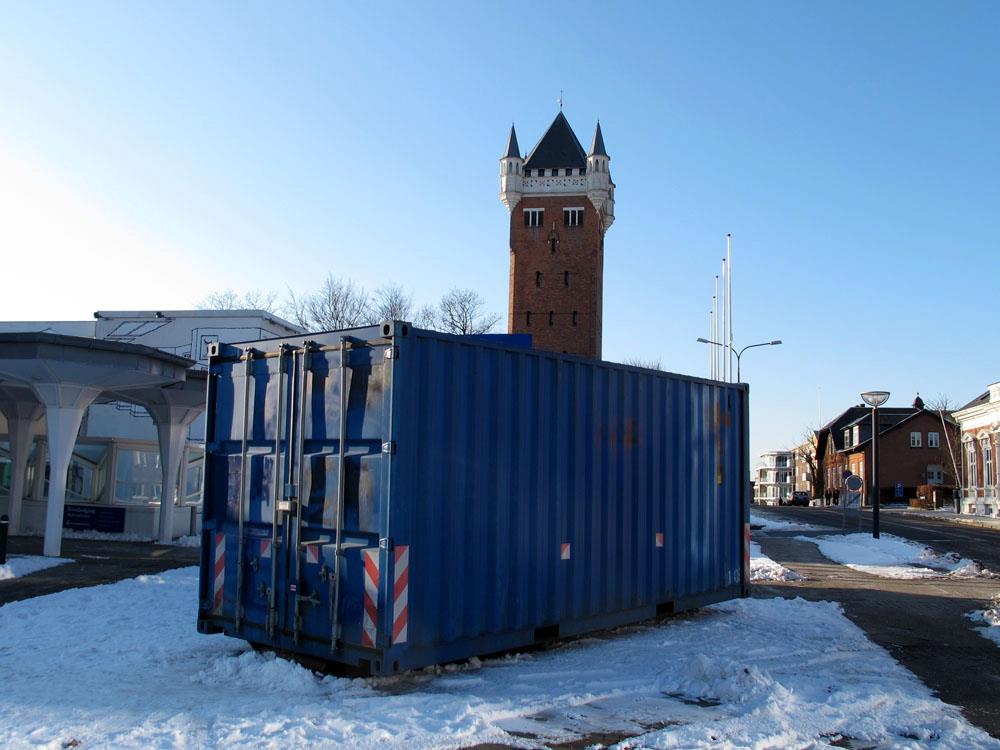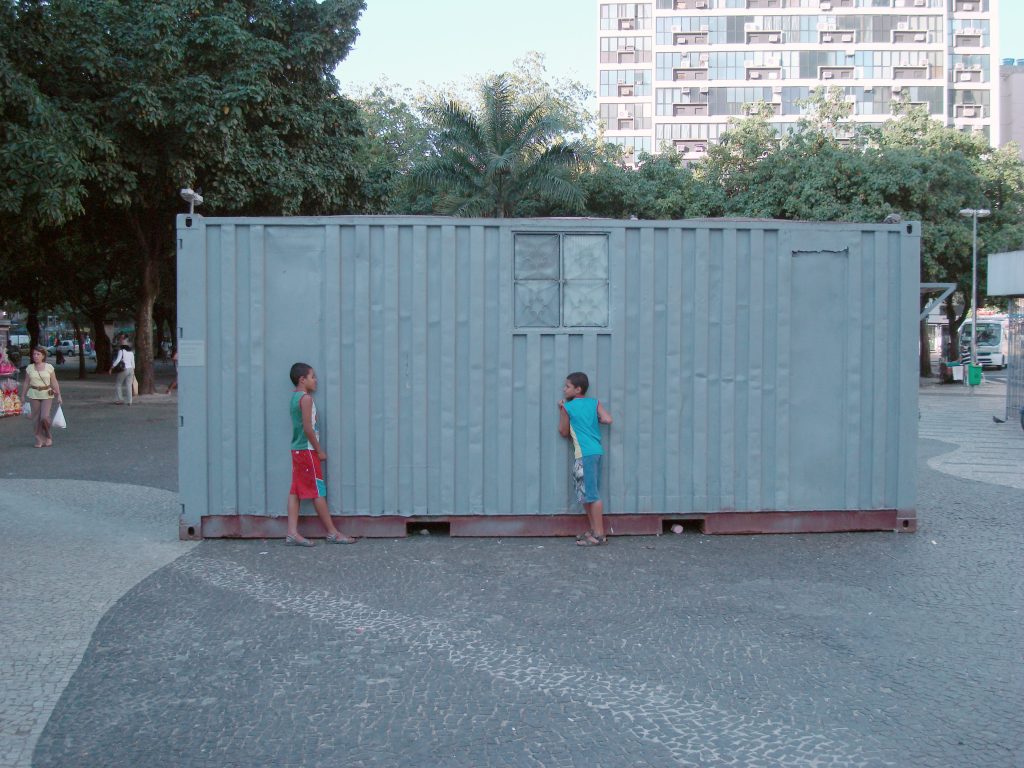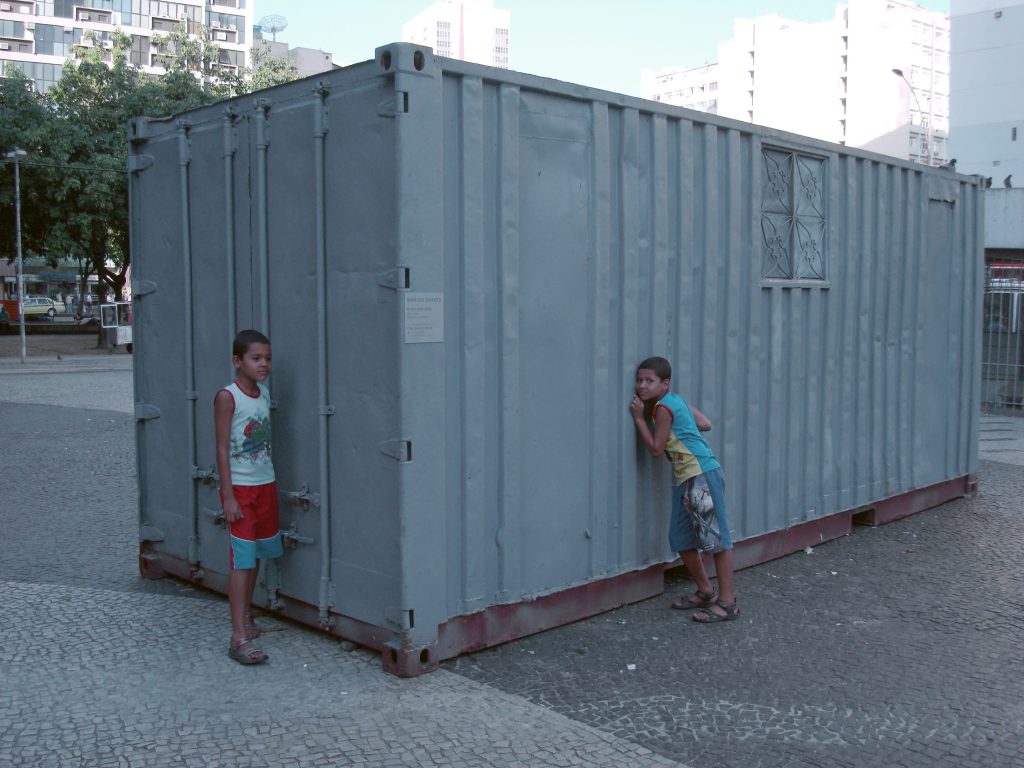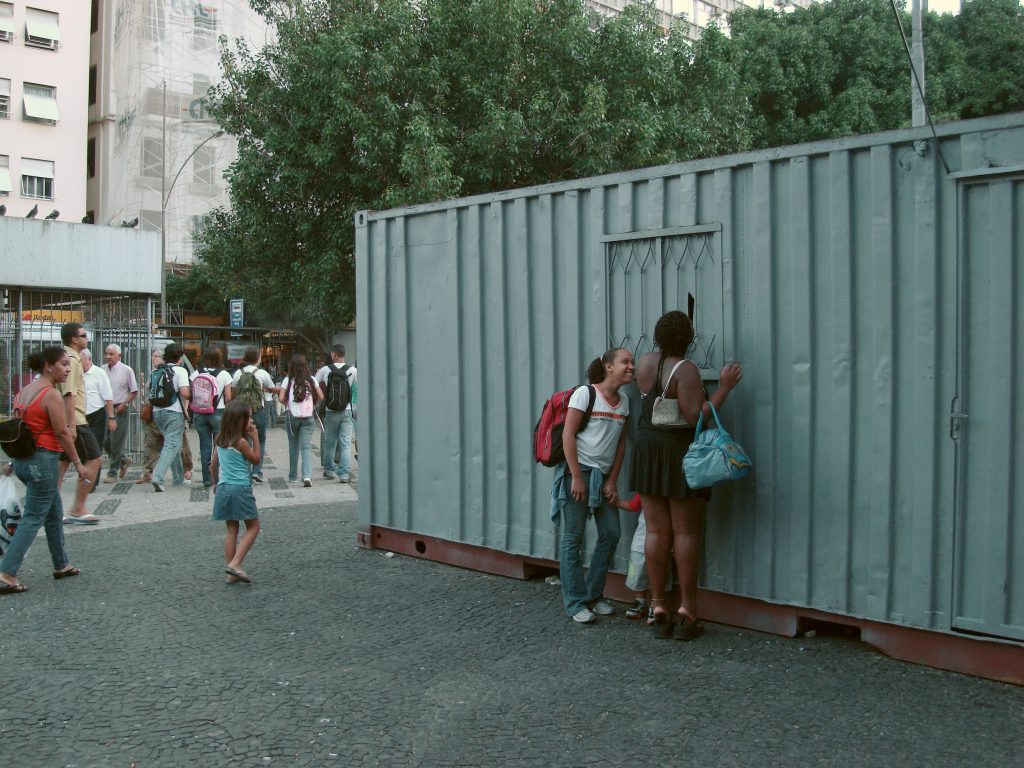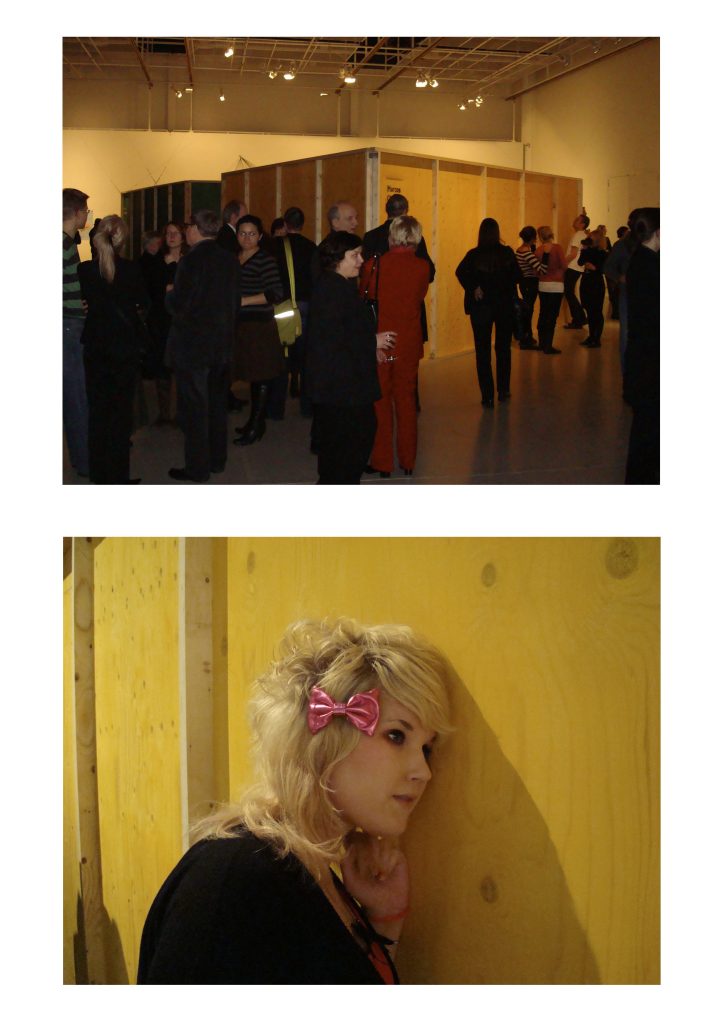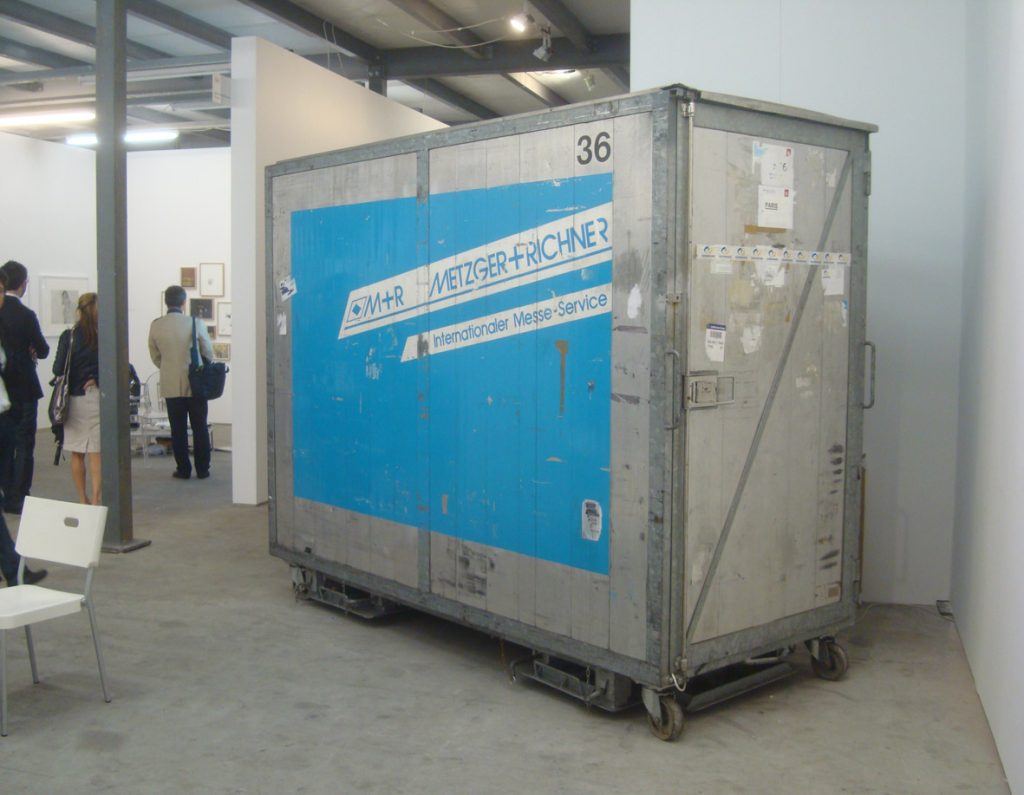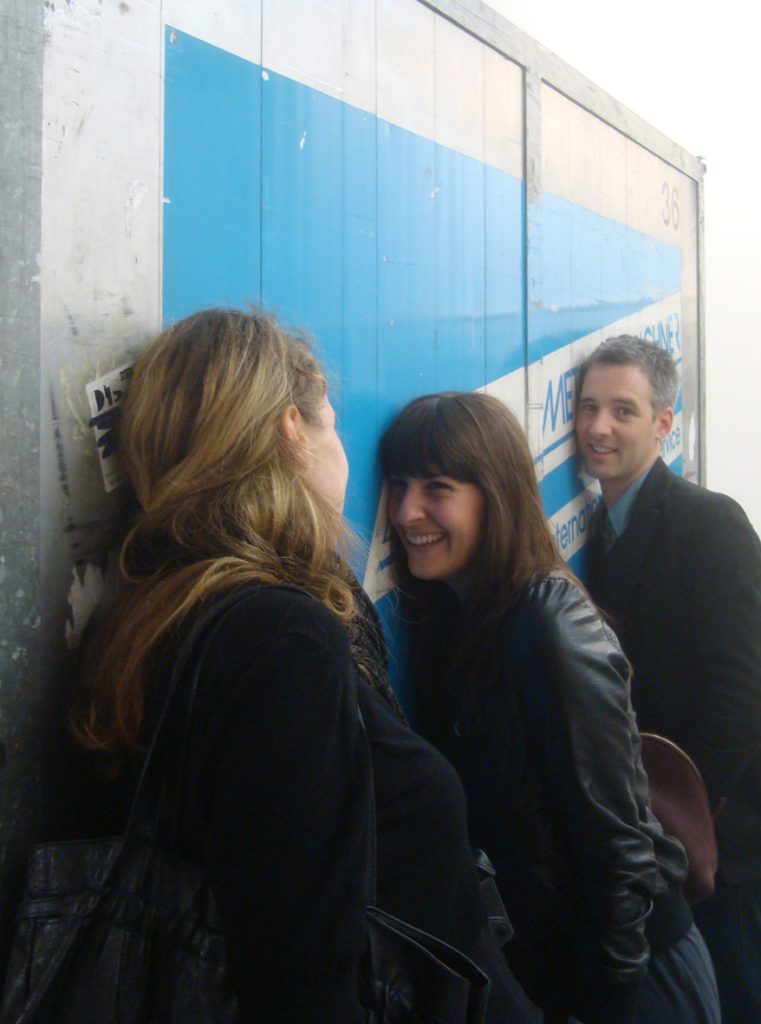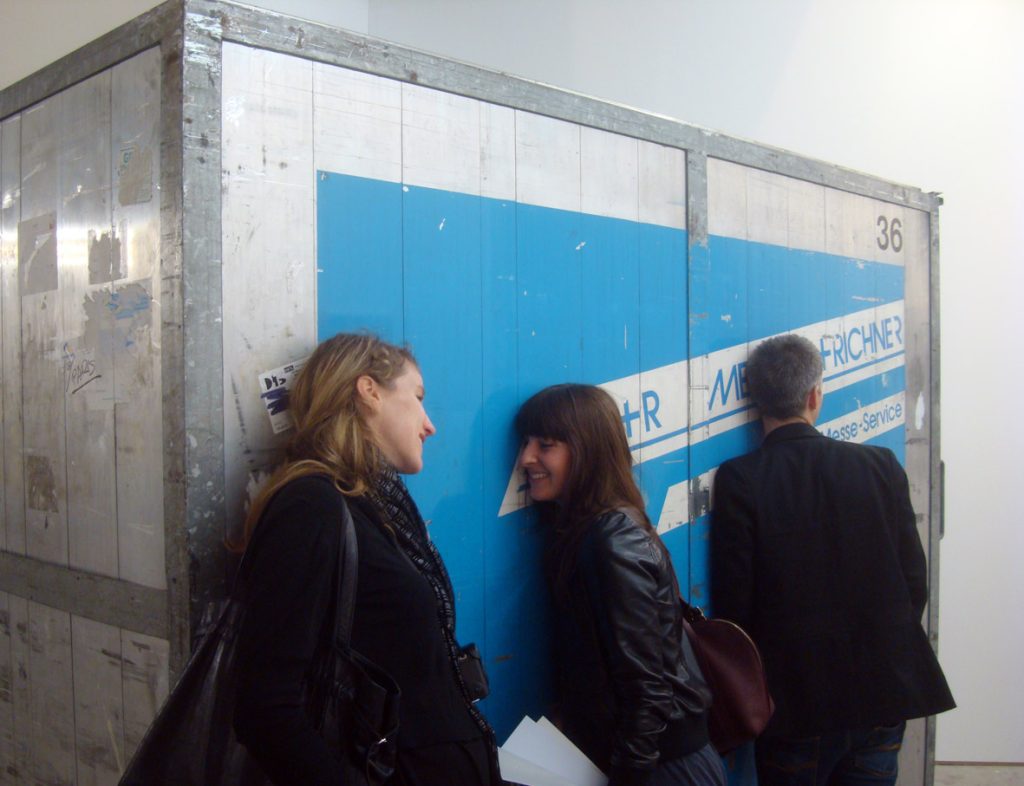

Laughing container


This installation was commissioned and presented at the “On Leaving and Arriving” exhibition in Cardiff, Wales, which marked the city’s centenary. The port was very important during the Victorian era (19th century), when it was widely used to transport coal, the fossil fuel of the day. With the decline in coal exports, as oil entered the international circuit, the port lost its strength. The exhibition, therefore, builds on this recent past to look to other futures and, to this end, invites artists from port cities to use containers scattered around the city as exhibition spaces. At first, videos would be shown in the containers. However, on observing the dynamics of Cardiff, Marcos Chaves decided to negotiate another use for the space with the show’s curators. He brought with him the audio of the installation Morrendo de rir (2002) and proposed playing it on loudspeakers installed inside a closed container, transforming it into a sound sculpture. The audio contains the most diverse laughs in terms of intensity, duration and timbre. Installed on a pedestrian street, the laughing container came into contact with the public. In an unexpected development, shopkeepers in the area began to gather around the play during their short breaks from work.
The attitude of the subordinates, who interacted more and more with the sculpture, soon left the shopkeepers dissatisfied and they complained publicly in the newspapers about the distraction the object brought to their employees. Displacements are adept at provoking tensions, not least because, without them, you can’t get out of your seat. That said, moving forward in space, by denying the use of the interior of the container as a mere white cube, in this case a white rectangle, the artist throws all the interiority of meaning out of it, in a paradoxical reconversion in which the inside inhabits the outside and vice versa. There is no duality in these surfaces, just as it doesn’t matter whether the laughter we hear is of happiness or despair. Iron, then, becomes as ambiguous as a laugh and a laugh becomes as ductile as iron. Ambiguity lies in at least two paths, strange to each other, it is true, but always cohabitable; we will never know for sure if we are in front of an animated object or if we are witnessing an animated encounter from the outside. When in doubt, ask the spectator, it’s he who has the last laugh.
Yan Braz
